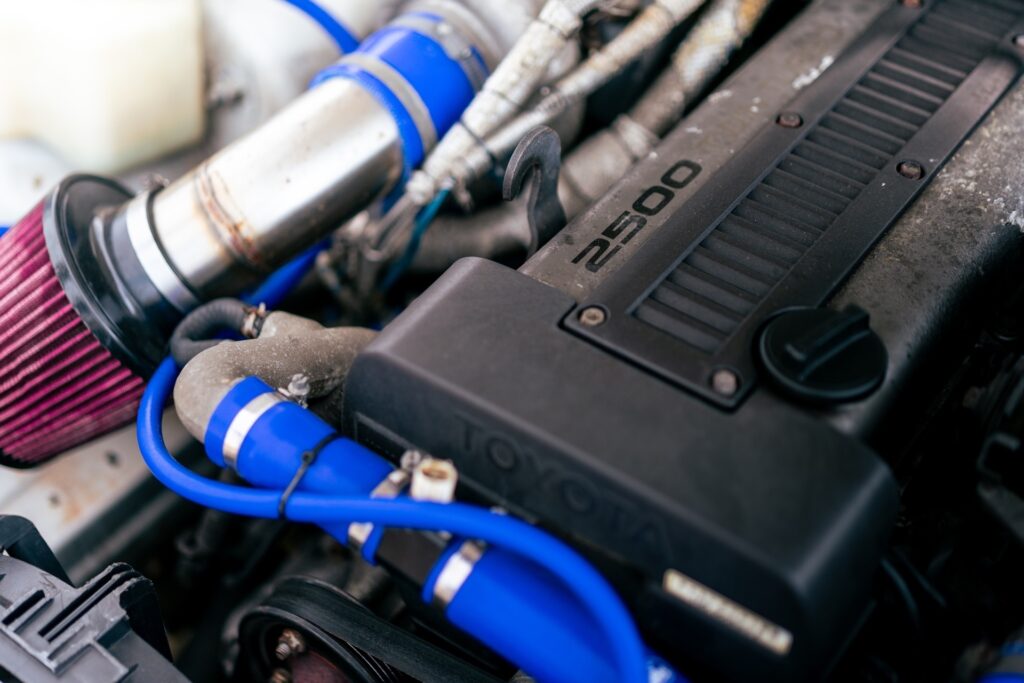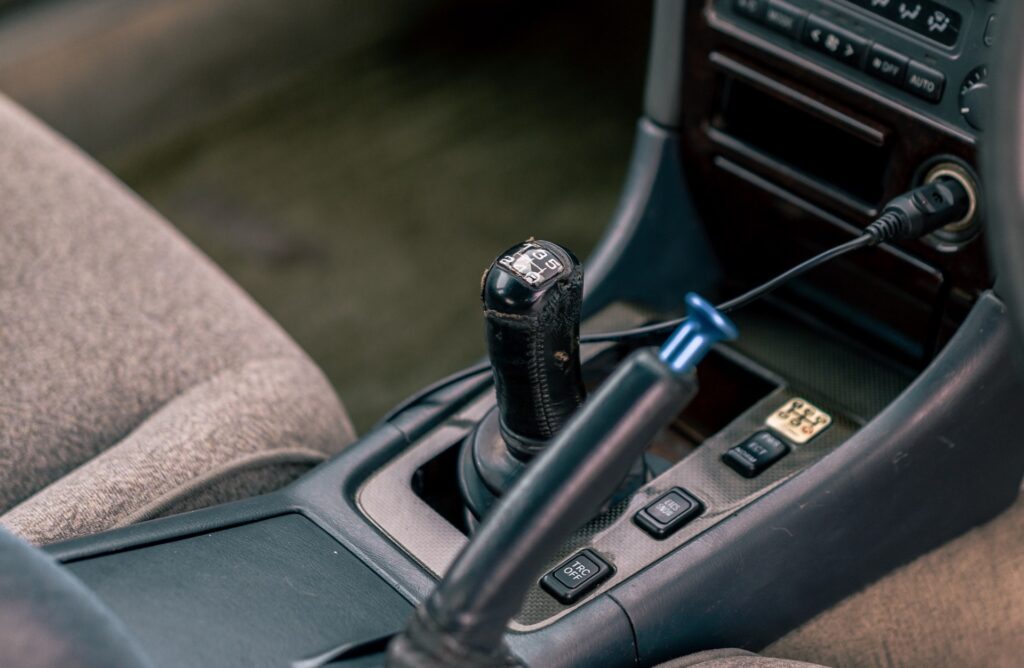Back again, are we? What is it this time?
Yes, indeed. The second installment of our JDM Drives segment features the Toyota Mark II. It’s a descendant of the Corona. It’s a mid-sized rear-wheel drive sedan that has always done a lot right without ever threatening to set the world alight.
In North America, the Mark II was known as the Cressida. But while the Cressida was replaced in the early ’90s with the front-wheel drive (boo) Avalon, the Mark II continued in Japan. This is the X100 chassis, the sixth and penultimate iteration of the four-door sedan.
Mark II, eh? It sure looks like a Chaser to me.
That’s right. The X100 chassis was actually shared with three models. The Mark II was more of an entry-level offering, while there was also the Cresta, which was positioned slightly upmarket, and the sportier Chaser, that is perhaps best known outside of Japan thanks to its popularity as a drift car – one made a brief appearance in the car park scene of Tokyo Drift.
Quick Facts
Okay, so the Chaser is sporty. Mark II is entry-level. Isn’t this like showing me a standard Corolla and expecting me to think of it as a GR?
Whoa, whoa, whoa. You haven’t let me finish. Okay, “entry level” was a bit misleading but it’s the best way of describing the model in this context. In reality, all three were premium four door sedans that had a lot of overlap. In other words, the bean counters would ensure no such thing existed today. Come to think of it, it doesn’t. Later generations were condensed into just the Mark X, before being discontinued entirely.
Read: The Honda S660 Is The Miniature NSX The World Was Deprived Of
Anyway, back to the ’90s. The Chaser was marketed as being sporty, but in reality, the drivetrains were the same. The main differentiators were external appearances and interior trim changes between the three.
As with most Japanese cars, the range of engines and drivetrains offered across all three models is extensive and would perhaps deserve an article of its own. You got everything from inline-four diesels to winter-weather-beating all-wheel drive offerings.
So what makes this one special?
I’m glad you asked. What we have here is the top-of-the-line Mark II Tourer V. Strictly speaking, it started life as a 2.0-liter inline six, and was converted with all the parts from a donor.
The Tourer V trim appeared across the model trifecta and offered a rear-wheel drive chassis with a 2.5-turbocharged inline straight-six, otherwise known as a 1JZ-GTE engine.
See: Next 2026 Toyota GR Supra Rumored To Get Both BMW ICE And EV Options
The letters J and Z are like catnip to fans of JDM, and for good reason. The 3.0-liter 2JZ is arguably the most famous of the lot, appearing under the hood of the Mark IV Supra. While the singular form of Shawn Carter is 500cc short of the fanboy favorite, it’s by no means less impressive of an engine. With a few light modifications, it soon offers Supra-rivaling performance – all from a four-door sedan.
Ok, but four-door Supra? You know, it’s not too late to walk back that title, right?
I stand by it, good sir. The Tourer V offers the kind of performance befitting of a sports car like the Supra, but in a bigger and more luxurious package with a powerhouse of an engine that’s a shade away.
And powerhouse is the word. It’s not the guttural thrust that one is accustomed to with the brashly-induced Subaru EJ or Mitsubishi 4G63 engines. The 1JZ is in a very different class. It’s an inline-6, a layout inherently known for it’s smoothness, so this should be of no surprise. But the 1JZ’s smooth is a different kind of smooth.

It’s the smooth you get when you melt a tablespoon of butter and swirl around a saucepan. It’s the kind of smooth that whispers sweet nothings in your ear as you try to detect even a murmur or hiccup with a prod of the fast pedal. It’s the kind of smooth that doesn’t prepare you for the eventual wave of boost that picks you up and sends you careering toward the skyline.
Oh, there’s lag. But somehow even that presents itself in a manner in which you can appreciate it, nicely juxtaposing the moments on-boost. Because once the boost kicks in, it kicks in hard.
So it’s kind of like a Japanese M5 to drive?
That’s an interesting one. Yes and no. The M5s of old were just as adept at offering the comfort and pliability that the Mark II does. That said, an E39 or E60 would still have the Mark II licked on handling. But there’s something else that strikes me with the Toyota Mark II.
And that’s at is how adept these bricks are at pulling the big numbers effortlessly. Years of testing cars, both old and new, and only a handful have been able to do such theatrics with such composure.
The manual box allows you to grab the engine by the reigns and properly bend the power to your whim and fancy. Want some Smokey burnouts? No problem; just bounce the engine off the rev limiter without fear of pinged valves. Want a relaxed cruise? Slip it into 5th and outstretch your toe on the accelerator, letting the torque do the rest. Want to get from rest to nearly triple the speed limit? It’ll do that without let-up, too.

If one were to approach the last three-quarters of the speedo, hypothetically, it might be said that the cabin remains quiet, the steering remains taught, and the body motions remain composed. The glass isn’t double-glazed, nor are the body styles particularly slippery (our test car sports a very rare but perhaps not wind tunnel-proven Vertex Ridge wide body kit), and yet you get Autobahn-stormer levels of cruise-missile ability.
Autobahn Stormer? But this car was never destined to be sold outside of Japan.
Exactly! Why someone at Toyota would over-engineer a car for such sustained speeds, knowing it would never see Europe or the States, remains a mystery. Having said that, if such a creation was offered further afield, would it have had many takers? Press X to doubt.
The fast luxury sedan market is a pretty tough one to crack – even more so when your sedans are known as solid, reliable, and good-value alternatives to the Euro-lux establishment.
Read: The 2025 Toyota Camry Hybrid Distills Its Strengths Into A More Attractive Package
Perhaps this is more of a reminder that Toyota has always had that spark within them, even if it wasn’t always evident to the rest of the world. We’re only just now talking about how Toyota is rekindling its interesting-car pedigree.
But maybe it never lost it. Because while we got the Avalon and Camry, those at home were still able to hoon around in a rear-wheel drive super sedan. To me, it’s proof that Toyota has always been capable of offering enthusiasts something to scratch that itch – even if, in this case, they saved the best for themselves.

